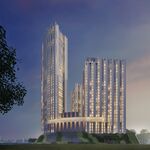One thing i've been thinking about recently is how overloaded to surface stops will get in the future once development settles in on the eastern portion of the line. Stops like Wynford are side platforms and they are due to see massive amount of development around it.
So while the underground stations will be able to accommodate higher loads due to wide centre platforms, some of the surface stops will see loads that may just exceed their capacity. And just imagine when there are service disruptions, it's going to be entertaining to see how bad the situation will get. Sure trains will have their lengths extended, but how will the surface stations accommodate high pedestrian counts.
Anyways that's just food for thought, and things we'll have to be concerned about in 15-20 years.




